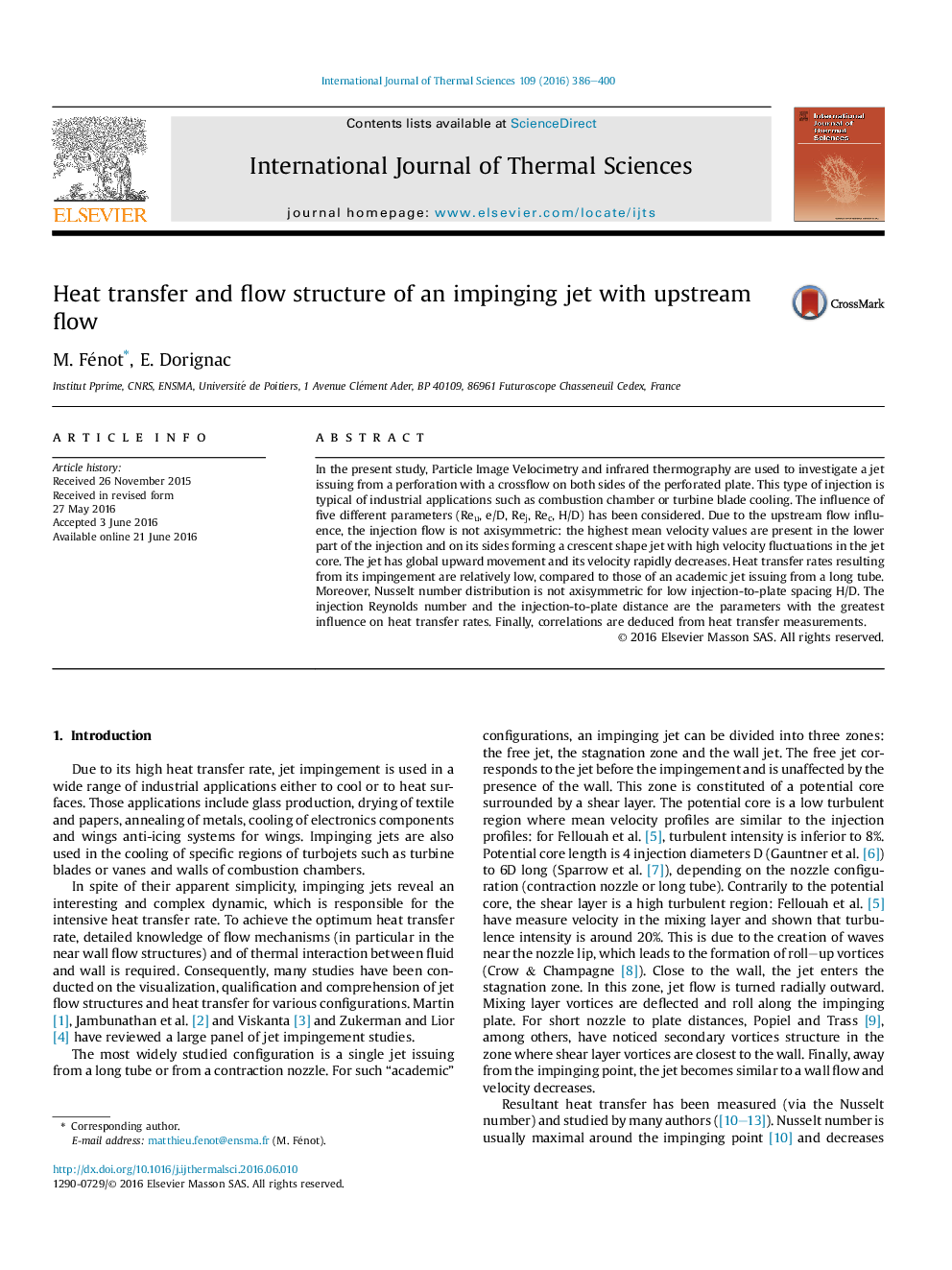| Article ID | Journal | Published Year | Pages | File Type |
|---|---|---|---|---|
| 668951 | International Journal of Thermal Sciences | 2016 | 15 Pages |
Abstract
In the present study, Particle Image Velocimetry and infrared thermography are used to investigate a jet issuing from a perforation with a crossflow on both sides of the perforated plate. This type of injection is typical of industrial applications such as combustion chamber or turbine blade cooling. The influence of five different parameters (Reu, e/D, Rej, Rec, H/D) has been considered. Due to the upstream flow influence, the injection flow is not axisymmetric: the highest mean velocity values are present in the lower part of the injection and on its sides forming a crescent shape jet with high velocity fluctuations in the jet core. The jet has global upward movement and its velocity rapidly decreases. Heat transfer rates resulting from its impingement are relatively low, compared to those of an academic jet issuing from a long tube. Moreover, Nusselt number distribution is not axisymmetric for low injection-to-plate spacing H/D. The injection Reynolds number and the injection-to-plate distance are the parameters with the greatest influence on heat transfer rates. Finally, correlations are deduced from heat transfer measurements.
Related Topics
Physical Sciences and Engineering
Chemical Engineering
Fluid Flow and Transfer Processes
Authors
M. Fénot, E. Dorignac,
